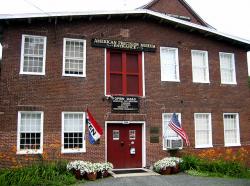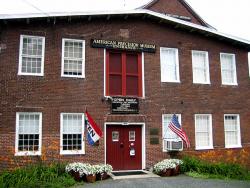In fulfilling a contract for 25,000 U.S. Army rifles (Model 1841) and a like quantity for the British government, Robbins and Lawrence were the first to achieve interchangeability of parts on a fully practical level, contributing greatly to all subsequent mass production of machine products. This was made possible by the systematic improvement and refinement of existing standard and special-purpose machine tools, enabling them to perform with the close-limit precision essential for "repeatability" and thus interchangeability (see the American Precision Museum).
Precision

YearAdded:
Image Credit:
Courtesy Flickr/Liz West (CC BY 2.0)
Image Caption:
American Precision Museum
Era_date_from:
1966
1987
Innovations

In fulfilling a contract for 25,000 U.S. Army rifles (Model 1841) and a like quantity for the British government, Robbins and Lawrence were the first to achieve interchangeability of parts on a fully practical level, contributing greatly to all subsequent mass production of machine products. This… Read More


